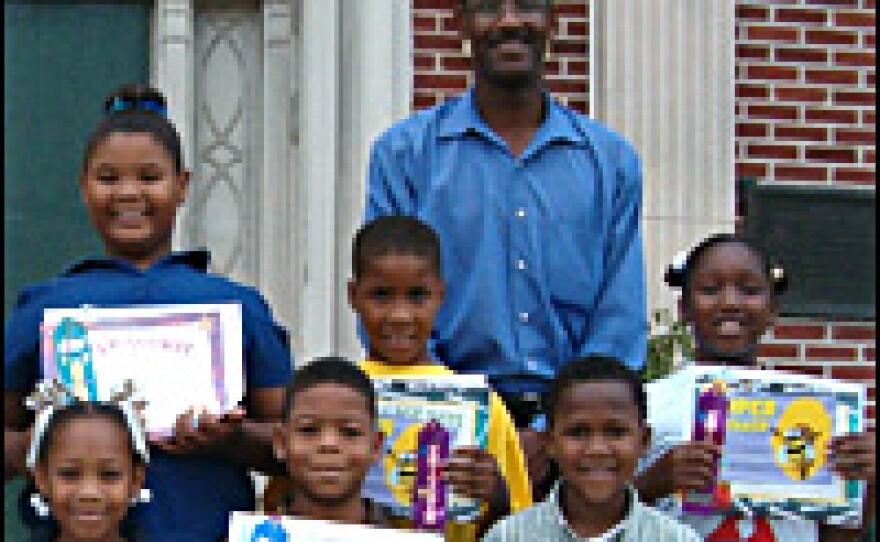

Today, there are only about one-third as many students attending the New Orleans public school system as there were before Hurricane Katrina. The system is recovering from the storm, and from a state takeover to address years of failing test scores. As a result, it has been completely remade, and is now being run by a patchwork of charter school organizers, and state and local administrators.
No Documentation
At the main office of Fischer Elementary School in the Algiers neighborhood, principal Dahme Bolden is in the middle of a drama that's being replayed all over this city. She's trying to figure out what to make of two young girls who've shown up for school with no documentation.
Tatiana, 9, is being raised by her grandmother, but a family friend has brought her to school today, along with her 5-year-old, Marguida. The children have no school records and no proof of residency; it's not even clear whether they've been immunized. The family friend, Ekeesha Green, tells Bolden that Marguida will be crushed if she's sent back home because she hasn't had her shots.
Bolden discovers that Tatiana apparently missed most of the last year of school, which is doubly unfortunate, because if she is like the other children here, she was in need of help before the storm.
Fischer Elementary and the surrounding neighborhood of Algiers was not heavily damaged by the storm. But this school has been taken apart and reassembled. It's no longer part of the New Orleans school system. Instead, it's now a charter school, like more than half of the schools that have opened. As a sign of just how mixed-up things are, directly across the street is another kindergarten-through-eighth grade school that is run by the state.
As an administrator, Bolden says, there's one huge difference between the old system and her new charter.
"The difference is I can hand-pick my teachers," Bolden says. "As a result, I see more leadership from the teaching staff, [more] enthusiasm, I see more teaching and learning going on."
But Bolden concedes that she has had a hard time figuring out just how many teachers to hire because the number of students at Fischer keeps rising and falling as parents try to find the best school closest to home. The head of the local teachers union, Brenda Mitchell of United Teachers of New Orleans, says that state overseers have turned this year into chaos by letting schools open at different times, under different forms of leadership.
"I had hoped that the state was going to live up to what they expected the district to live up to," Mitchell says. "And that was to have an orderly opening of schools with all the material and staff in place."
Having a Clear Vision
At the S.J. Green Charter School, director Anthony Racasner delivers a message to his new 8th grade class.
"The goal is that everybody's name that appears on the homeroom list ought to also appear on the graduation list," Racasner says.
Doc, as the students call him, is known around town for getting New Orleans' first school charter, back in 1998. Now, he sees the growth of the charter movement as a way to empower those who were left behind under the old school system. It's true, he says, that the current setup is confusing, with some schools run by the state, others by the remnants of the school district, and still others run by an array of charter organizations.
"There is simply a certain level of sophistication you have to acquire in order to make sound choices -- and that should not be the exclusive domain of those who have resources," Racasner says.
The charter movement may have helped reopen schools after the catastrophe of Hurricane Katrina. The question now is: What's next? Will charters keep blooming in New Orleans, or will the state and city return to a central school district once conditions return to normal?
Many principals of charters hope they can maintain local control over their schools, but they have many words of caution. They know opening and running charter schools is a lot of work because principals and charter-school directors are like mayors of a small town; they have to fix everything themselves. The buck stops in the principal's office. Currently, gift donations are helping schools, but principals know that those gifts will eventually run out. And when they do, they face the challenge of going forward without the adrenalin that's pumping through their schools now.
Copyright 2022 NPR. To see more, visit https://www.npr.org. 9(MDAzMjM2NDYzMDEyMzc1Njk5NjAxNzY3OQ001))







